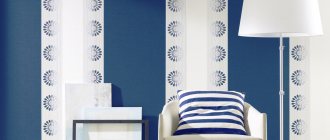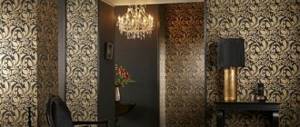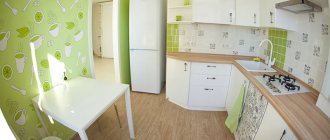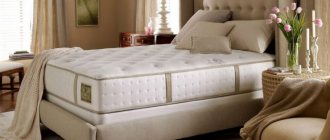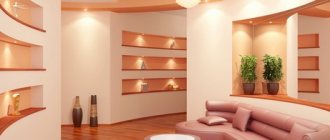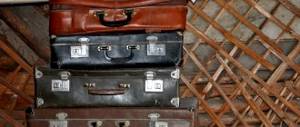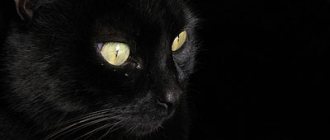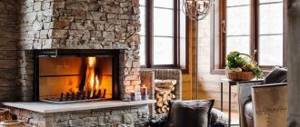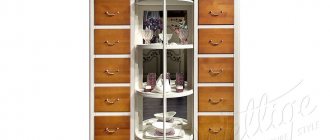23.03.2018 0
1476
Natural wood is perhaps the most popular finishing material that has been used since ancient times. Its natural color and texture create a warm and cozy atmosphere in the room. However, wooden lining or boards are not cheap today, so not everyone can afford them. As an inexpensive alternative, manufacturers offer wood-look wallpaper, which not only imitates the natural structure of this material, but also allows you to finish walls without outside help.
Wood-effect wallpaper will fit perfectly into any interior, be it, for example, traditional classic, country, hi-tech, modern, minimalism, eclectic, rustic or eco style. Also, this material is great for creating a truly exotic home, for example, oriental or African style. Wallpaper with imitation wood looks expensive and elegant; it is an excellent assistant for realizing an interesting design idea.
Warm interior with wood wallpaper
Wood wallpaper
My friend came to me with a question on how to create a warm and pleasant interior in his rooms. He was interested in wallpaper. Since he was going to cover the walls not only for himself, but also for his aunts, I started with budget options.
Wood is an amazing material that can retain heat and provide optimal comfort. To create a cozy interior, just stick wallpaper with wood images on the walls. It can be:
- paper trellises with a simple pattern;
- 3D wallpaper;
- embossed vinyl;
- textured non-woven with embossing;
- photo wallpaper.
Regardless of the type of wood, cutting direction and processing method, wood-look wallpaper always fits into any style and warms with its presence. A separate group includes finishing material for walls with a decorative layer of plant parts:
- wood veneer;
- bamboo bark;
- pressed cork.
A thin layer of wood is glued onto a paper backing. The wallpaper is environmentally friendly and beautiful. Strips and slabs are easy to stick to the wall. Disadvantages include high requirements for surface preparation and cost.
Basic Steps
Before you hang wallpaper on the lining, you need to select and buy it. Let's start with this:
Step #1: selection
The selected canvases should be:
- Dense . Preference should be given to products with a non-woven base. Although their price is higher, they will last longer and be of better quality;
Non-woven fabrics, due to their high density, can easily withstand the mobility of wooden sections
- Textured . These will better mask the gaps between the panels.
Dense textured samples do not fall through at the joints, but stretch over them and hide any unevenness underneath
I recommend buying canvases that are impregnated with special glue. They adhere much better to wooden surfaces.
You can also put photo wallpaper on the lining. They are distinguished by a fairly high density, have a wear-resistant coating and are able to give a wooden wall not just a new, but simply a fantastic look.
Thanks to photo wallpaper, a simple lining can even acquire a landscape of another planet
Another interesting trick is to use wallpaper under the lining. It is convenient to use in cases where the warm soft wood-colored finish suits you quite well in terms of its visual qualities, but is already quite worn out, and there is not enough money to fully replace it.
The canvases can externally repeat the lining pattern
Step #2: Cleaning the Panels
Is it possible to glue wallpaper onto wooden sections right away without any preparation? Of course not, first the foundation must be properly prepared. And you should start by cleaning it, since over the years of operation a lot of garbage has probably accumulated on it:
| Photo | Description |
| We remove all dust and cobwebs from the surface of the wooden panels with our own hands. To do this, use a slightly damp but very wet rag or sponge. | |
| We sand damaged areas, chips, and rough spots so that the surface of the lining becomes as smooth as possible. |
I do not recommend using cleaning products that contain wax, polish or oil. They will create a layer that interferes with the quality fixation of the adhesive sheets.
Step #3: preparing the site
Further instructions for preparatory work look like this:
- Carefully remove the floor and ceiling fillets so that after all work is completed they can be installed back. Why spend money on new ones if you can successfully use the old ones?
- We dismantle sockets and ventilation grilles , if any. It is much easier to then cut out the corresponding hole in the canvas and install the object back than to engage in appliqué to get around problem areas.
Read also: Is it necessary to dig up gladioli in the fall?
Step #4: Primer
Despite the fact that wallpaper sticks to wood quite well, it doesn’t hurt to prime it first. This way you will reduce the absorbent properties of the wooden panels, so you will need much less expensive glue.
| Photo | Description |
| We dilute a primer, which can be bought at any specialized store. | |
| Apply primer evenly to the lining using a wide brush or roller. |
Step #5: gluing
- We close all doors and windows . Drafts during the described process are unacceptable; they will lead to peeling of the finishing material even before the glue that is supposed to hold it dries;
- We measure the height of the wall in the corner where wallpapering will begin. It is also advisable to measure the angle itself using a spirit level;
- We measure and cut the first piece . It is better to cut off the strip with a margin, since it is much easier to trim it later than to sharpen it using small inserts;
- We spread the glue. It’s even better to do this much earlier so that the solution has time to infuse;
It is convenient to stir the glue using a drill set at a low number of revolutions per minute.
- We wet a wide brush or roller in the adhesive mixture, squeeze out excess glue on the edge of the container;
I recommend using special containers with a ribbed wing for glue. It is very convenient to remove excess solution.
A couple of movements on the embossed surface will rid the roller of excess adhesive mixture
- Apply glue to the wall. If you purchased non-woven wallpaper, as advised in the first point, then you will not need to treat the canvases themselves with an adhesive;
In the case of using non-woven fabrics, it will be enough to treat only the lining itself with glue
- We apply the cut strip to the top of the wall, then smooth it down and to the sides using a dry, clean roller;
- We glue the next canvas end-to-end or slightly overlapping. The second option is less preferable, since it can form bumps at the joints, but it is still better than then closing possible gaps formed due to uneven walls with narrow flaps;
- After applying all the sheets, we cut holes for sockets and grilles. We mount them back;
- We install the fillets in their places.
My friend and I are choosing a budget option for imitation wood wall decoration
Photo wallpaper on the walls in the bedroom
For Vadik's conservative and economical aunts, paper trellises turned out to be the most acceptable. I insisted on choosing a duplex. Wood-look wallpapers and other designs have a decorative vinyl coating. The result is a more natural appearance of the walls, paint resistance to sunlight and a longer shelf life.
Duplex is stronger than its single paper counterparts. Their cost is slightly higher. They last several years longer without losing their appearance. I think that they are a profitable budget option for repairs. There is a large selection of wood patterns. Can be chosen to suit any style and taste.
Acrylic wallpapers can be considered budget wallpapers. They are suitable for wet rooms, more precisely the kitchen and hallway. Unfortunately, they do not differ in the choice of wood patterns. All main types of wood are presented in standard processing. There are no aged ones, with a rough surface of rough processing and other types. For a friend's aunts, who had endured decades of shortages, there was plenty of choice. The advantage is that they can be wiped clean.
Advice! When cutting wallpaper with wood imitation, move the pattern. Then it will look more natural. This is a rare case where leftovers from different batches will create a more natural look due to the different shades. The stripes must be glued randomly.
Paper wallpaper creates the desired effect
Wood-effect wallpaper in the living room
In standard high-rise apartments, we did not cover all the walls of the room with wallpaper with a wood pattern. Only one or two. For the rest, we selected trellises with a soft background:
- blue;
- yellow;
- light green;
- beige.
The drawing is small and dim. He should not distract attention to himself. The accent of the decoration was wood.
At the dacha, the walls were completely covered with wood-look wallpaper. We combined only the location of the boards and the type of material. The result is a natural wooden house in country and rustic style. The aunts finalized certain elements of the thematic design themselves. We bought paper trellises. They are able to endure 2-3 unheated winters with holiday visits and a hot fireplace. Then you don’t mind replacing them with new ones.
Drawings and embossing to imitate natural materials
We glue wood-look wallpaper
Vinyl wallpaper amazed my friend's relatives with the naturalness of its surface. Using embossing and other methods of applying a decorative layer, the textured surface of the wood was conveyed with great precision. Vadik looked for a weathered shiplap plank for the spacious hallway in the house. He decorated the room in a colonial style. The walls looked natural. When the aunties came to visit, they spent a long time stroking the wallpaper and admiring it.
In stores you can choose wallpaper that imitates various types of wood. The assortment is increased by identical designs with different tones. Boards and beams, transverse and longitudinal arrangement, and even herringbone.
How to put wallpaper on imitation timber?
A fresh frame house is sheathed on the inside with clapboard under timber. I wanted smooth walls. We tried to fill the cracks with elastic putty - it seemed to work. But knowledgeable comrades are afraid that the boards will dry out and the wallpaper will tear. And if you attach drywall directly to the paneling, will it also tear? I really don’t want to remove the paneling and put the frame under the drywall.
In houses made of timber, it is recommended to install a sliding frame with plasterboard. Such a frame makes it possible to avoid deformation of the gypsum board due to settlement of the house and warping of the walls.
Knowledgeable comrades do not scare, but tell the truth. The sheathing will move back and forth with changes in temperature and humidity conditions.
The simplest and least expensive option for you is to cover the walls with plasterboard using profiles. Since the frame does not shrink as much as a timber frame, much less a log house, you can do without sliding guides.
It's a shame! A clapboard “backing” would give the plasterboard wall excellent strength.
Read also: Shah pilaf in lavash video
grom1300 wrote: A clapboard “backing” would give the plasterboard wall excellent strength.
If your frame is assembled correctly, the inner lining is not a structural element. Accordingly, the loads on it are negligible.
VKim wrote: the internal lining is not a structural element.
Well, yes, until you try to hang a kitchen on it, for example.
You’re doing it anyway, not in your place of permanent residence?! Right? And even if it’s in it?! Simply, you buy wallpaper and a primer, prime it, paste it over, there are wallpapers of different price categories, and so, the season has passed, winter has passed, say at the end of April, you come, warm up the house so that the humidity and temperature can be adjusted to manufacturability, and re-glue the wallpaper, at least in some places with another drawing (design-decoration), at least in its entirety, it’s not complicated and quite fast, and every year there’s a new fresh interior, and on May 1st you open the season, with barbecue, friends, in general, so off we go.
In addition, according to the standards, it is necessary to change the wallpaper once every 3-5 years, especially if it is paper, since it collects dust and various riffraff - microbes, etc., which is far from a positive thing for the respiratory tract and the body as a whole. .
How to put wallpaper on imitation timber?
A fresh frame house is sheathed on the inside with clapboard under timber. I wanted smooth walls. We tried to fill the cracks with elastic putty - it seemed to work. But knowledgeable comrades are scary, - Mastergrad Forum
An endless variety of options for depicting wood on wallpaper to suit any style
We glue wood-look wallpaper ourselves
For modern minimalist and natural styles, loft and eclecticism, my friend and I chose wallpaper for his home. The eldest son wanted a wall in his room with an imitation finish of old painted boards, which had peeled off in places and still had nail holes.
In another children's room, one wall was decorated with varnished pine beams. The background was suitable for numerous shelves and frames. We bought paper and acrylic wallpaper. They allow the walls to breathe and do not emit harmful substances. Teenagers' tastes change quickly, so the wall decoration can be easily updated.
Photo wallpaper conveys all the uniqueness of wood
Photo wallpapers convey the diversity and uniqueness of wood most accurately. Any image can be applied to them.
- longitudinal cuts with pattern lines;
- ends of logs with a variety of annual rings on saw cuts, stacked;
- ship planking;
- finishing the walls with different-sized boards;
- retro planks with traces of paint and nails;
- planken panels with a pattern printed on top.
The imagination of designers creating photo wallpapers is limitless. In addition to the available wood patterns, you can order your own image indicating the dimensions of the wall.
Photo wallpapers have a paper base and a decorative layer. They can be smooth and textured. The protective film on top allows you to wipe them clean. Additionally, you can decorate them with stickers. For example, my son placed outline images of animals on logs and changed them after a few months.
Natural materials allow the walls to breathe. If wood wallpaper becomes dirty, it can be wiped like all others.
Features and Benefits
Naturally, any wall coverings with such a pattern are made in brown shades. This is the true natural color of wood and has a calming effect. A room in this color gives the owner a feeling of protection and comfort, and also adds common sense for making informed decisions.
This type of wall decoration is especially ideal for a person who spends the rest of the time in a too bright interior or is very active. For example, a bedroom in brown and beige shades provides complete physical and mental rest after a hard day at work. This color is also associated with elegance and a good sense of style.
Advantages of using such coatings:
- wallpaper for walls made to look like wood fits harmoniously into any design, as do any decorative wooden elements;
- such wall coverings can be combined with ordinary plain wallpaper or with plastic panels, masonry, etc.;
- such wallpaper is used both in classical styles (for example, with a pattern of aged or shabby wood, logs) and in modern design styles (it is possible to use ornaments from fragments of wood);
- color solutions are now made not only in beige and brown tones, but also with gray, pink, sand, yellow and even black and white shades, which will diversify the overall perception of the interior of the room;
- the ability to give the room an impression of nobility and taste, such an interior will evoke an association with a rich and luxurious old house.
Related article: Nuances of choosing a laminate to wallpaper color: successful combinations of shades
Wallpaper with veneer
My friend appreciated quality materials. He could afford any expenses. So we went with him to the department where they sold wallpaper with a natural finish. The first collection we came across was the one with veneer.
A thin slice of wood is glued onto a paper base. It retains its natural texture, color and pattern. In production they mainly use:
- pine;
- birch;
- aspen;
- cherry;
- nut;
- oak;
- beech.
With the help of impregnation with wax and coating with various varnishes, the surfaces are given a matte and glossy surface, and the number of shades is increased. For avant-garde styles, wood is bleached, tanned and treated in other ways.
The location of the veneer can be longitudinal or transverse. Strips of various widths, for boards, beams, planks. More expensive products have ornaments assembled by hand from wood of different colors.
The peculiarity of wallpaper with a veneer layer is that it is necessary to level the wall well and prime it. Reveal the complex one. You can only use special glue. The finishing material is heavy and cannot be glued without skills.
Wood chip wallpaper
The price range for such wall covering materials varies greatly, which means that the buyer can choose wallpaper to suit every taste and budget. A cheaper option is made from aspen shavings, spruce and pine waste. Such wood material is treated with antiseptics and, after mechanical sanding, processed into a special mixture from which wallpaper is directly made.
Advantages of wood chip finishing types:
- good thermal insulation;
- increased water resistance;
- color fastness to sunlight;
- environmental friendliness and anti-allergenic properties;
- easy to stick on walls, do not require special care;
- high strength and durability;
- non-stick coating.
A similar type includes cork wall coverings, which are made by applying a layer of cork veneer to a paper base. Cork wallpaper has a relief texture and is used in natural design.
On video: cork wallpaper in the interior.
Related article: Tips for decorating a small room with photo wallpaper - how to “pull apart” the walls
Cork finishing materials for walls
The bark of the cork tree is crushed and pressed. Wallpaper has different thicknesses, depending on the base. The most common sizes are listed in the table.
| The basis of cork wallpaper | thickness, mm | strip width, mm | roll length, m |
| without base | from 2 to 3 | 500 | 10 |
| paper base | 0,4; 0,5 | 500 | 10 |
| self-adhesive | 0,4; 0,5 | 480 | 3 |
Each manufacturer produces products with its own characteristics and dimensions. The price depends on the manufacturer and quality.
In addition to wallpaper, panels are made from cork. They are square and have a thickness of up to 8 mm. The material is natural, breathes and purifies the air, absorbs noise and maintains the optimal temperature in the room. Its cost is high. It's difficult to glue on your own. The next renovation can begin in 20 years.
Bamboo wallpaper and panels
Bedroom interior with wood-effect wallpaper
From the stems of huge grass - bamboo, the top layer is removed and glued to the base. Typically these are vertical strips up to 50 mm wide. Bamboo wallpaper is impregnated with vegetable wax and coated with varnish. They do not fade and retain their appearance for many years. Problems arise at the junction of strips glued to the wall. If the work is poor, they separate from the wall.
The wallpaper is decorated by hand. Various shades of veneer are used. A pattern can be applied with paint using a stencil on top.
A mat is woven from strips of the trunk and pressed together, gluing together from 2 to 7. This is how bamboo panels are made. Both sides are front and unique. Weaving in a certain order has its own characteristics. No two products are exactly alike. Natural material and manual labor are reflected in the high cost.
You can glue the bamboo panels yourself if you have a couple of helpers who can press the panel and hold it until the glue sets. It is necessary to prepare the surface and outline the entire wall. You need to start from the middle. You can cut bamboo panels with large scissors.
Given their high wear resistance, thin panels are glued to the ceiling. Thick ones can be used to cover the floor. Resistance to moisture allows them to be used in bathrooms. You should not decorate the walls in the kitchen, especially near an open fire.
Rigid bamboo panels are made from veneer. Strips up to 60 mm wide are cut, glued to the base and pressed. The result is rigid panels with a natural coating. Additionally coated with varnish. Such panels look good in offices and classic interiors.
Instructions on how to hang wallpaper on lining
Any material wears out over time, be it the finishing or the wall of a building. At the same time, its user qualities - the level of thermal insulation, strength - may remain the same, but the appearance deteriorates significantly.
How to glue wallpaper to lining?
The appearance of the finish can be restored using various methods.
Is it possible to put wallpaper on the lining?
This method seems successful only at first glance. In fact, lining is not at all the surface on which such a method is justified.
- Wooden slats - assume the presence of a seam by default. Moreover, the more reliable, that is, with greater thickness, the material chosen, the deeper the seam will be. The risk of damage in such areas remains very high.
For the same reasons, the joints remain the “weak link” even if it is decided to glue two-layer non-woven wallpaper, which is highly durable. The material above the void changes under the influence of moisture and temperature in a completely different way than a canvas glued to a solid surface. As a result, the finish is subjected to constant increased load and wears out much faster.
- Another consideration that should force the apartment owner to abandon this idea is the loss of vapor permeability. Wooden lining absorbs excess moisture from the air in the room and removes it outside. This property allows you to do without a powerful exhaust hood and additional ventilation, since part of the work on removing condensate is carried out by the cladding material.
But it is difficult to glue onto the slats, but only non-woven and vinyl materials are possible, the vapor permeability of which tends to zero. This means that this valuable quality of wooden finishing will be lost, and in the room, if we are not talking about a loggia, additional ventilation will have to be organized.
- The picture looks a little better when it was decided to hang the wallpaper on plastic sheathing. Its level of vapor permeability is low, so in general the condition of the finish will not change. If the lamellas were assembled with a seam, then the above problems with material wear remain. With a seamless installation method, the canvas will need to be glued to an almost flat surface. This task is, of course, doable.
Here the main stumbling block is cost: the adhesion of the panels is low, and a rather heavy canvas can only be held on a smooth surface by special glue or liquid nails. It is extremely difficult to apply this composition evenly in a thin layer on a plastic surface, so excess consumption of materials is guaranteed.
Wallpapering
The technology itself is no different from conventional technology. The difference is the preparatory process.
- The surface is cleaned of dust and dirt. The seams should be cleaned especially carefully. If the material was coated with varnish or wax, the top layer will have to be removed. To do this, the lamellas are cleaned with sandpaper.
- Plastic slats are simply wiped with a damp sponge.
- It is recommended to putty the seams between the slats. This ensures at least relative durability of the finish.
- Both wooden and plastic surfaces are primed in several layers. Typically an acrylic latex primer is used.
- Then they begin gluing in the usual manner: apply a layer of glue, start working from the corner from the window, and so on. The photo shows a working moment.
Read also: DIY roll-out bed for two children
Application of liquid wallpaper
This material is a cross between plaster and wallpaper. The similarity with the first is ensured by the method of application, with the second - a higher decorative effect due to the addition of various components: silk fibers, metal threads, mica and others.
The idea of covering the paneling with liquid wallpaper turns out to be even worse. The material really resembles plaster and fills small gaps, cracks and chips, as it is quite voluminous. It can fill the seams between the lamellas, but the material consumption will increase sharply, and this kind of finishing will cost more than dismantling the lining and preparing the base surface.
The seams between the lamellas can be filled with regular plaster. Then the total cost will not be so high.
The surface of the lamellas must be sanded and treated with a primer that increases adhesion.
Instructions on how to hang wallpaper on lining
Recommendations for wallpapering lining.
Slabs made of sawdust and shavings with a decorative coating to resemble solid wood
Wood-effect wallpaper as an elegant design solution
Various slabs are made from waste wood. Chips and sawdust are pressed, impregnated with plant resins and glue. The front side of panels and sheets can have decorative finishes like wood, brick, or stone. The painted surface is given relief and varnished or laminated.
This finish is suitable for summer houses and wooden cottages. A budget-friendly way to quickly decorate the walls of your home. The selection of drawings is small. The panels are mostly impregnated with antiseptic and fire-resistant substances, and are moisture resistant. You can tile walls in bathrooms. Their disadvantage is their low vapor permeability coefficient. Good ventilation is necessary. The walls practically don't breathe. Require additional protection from rodents.
